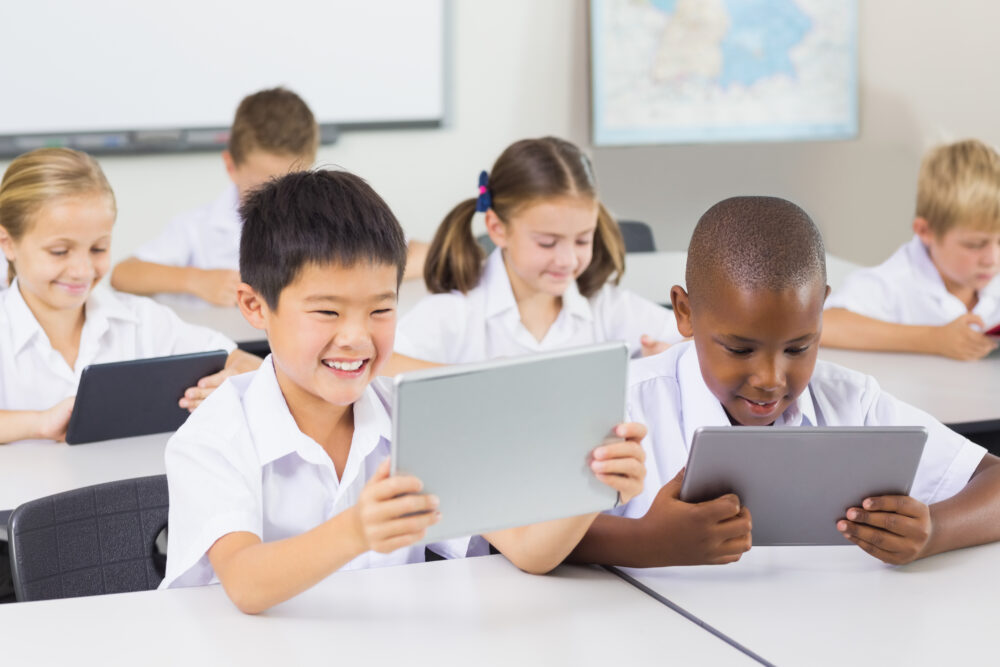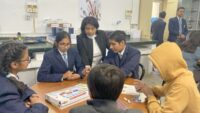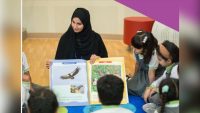As schools return to in-person learning, academicians take stock of the new realities and how tech tools and trends adopted during remote teaching are here to stay and will guide the future of education
Dubai, Dec 9, 2021: Latest technological advancements along with a strong COVID-driven demand discouraging physical attendance have led to a change in the way education is being imparted worldwide.
Both schools as well as staff have embraced technological solutions and adopted new ways of teaching.
For most of the schools, the pandemic and its aftermath came as a shocker and schools had to adapt fast. Teachers had to be trained, IT systems had to be put in place and this meant further investments.
Schools have been on a learning path as managements initiated training programmes in using technology, equipped the staff to adapt to new circumstances and encouraged them to collaborate with their peers to ensure that all are making the most of the technology available.
The first challenge was to digitise the curriculum. Schools also had to adopt various learning platforms and programmes, even as the situation continued to fluctuate from in-person to remote learning, later transitioning to a hybrid system, and slowly moving back to in-person learning. Even so, schools are now fully prepared to move back to remote learning in case of a sudden spike in infections.
The adjustment to new ways was however more easy for schools who had already initiated some elements of technological aspects into teaching.
“In the secondary school we had started using Google Classroom a year before the start of the pandemic. This allowed us to continue with our lesson delivery via the platform with no issues when we all switched to distance learning,” says Hanane Ouna, Assistant Head of Secondary, Reach British School.
The use of tools such as Microsoft Teams, Zoom and Google Meet ensured that all children had the opportunity to join live from all around the world. “I still find this remarkable! Children were joining us in lessons from almost every global time zone. The teachers have shown Olympic Gymnastic levels of flexibility,” says Christopher Huntley, Chief Digital Innovation Officer at GEMS Jumeirah Primary School.
Meanwhile, as schools returned to in-person learning, some of the technological adoptions have continued to prevail.
According to Michael Norton, Teaching, Learning, and Assessment Coordinator at GEMS International School – Al Khail, the school had implemented a technology platform to publish ‘Weekly Briefings’ for students, which outlined lesson objectives, provided learning resources, and enabled students to keep track of their learning journey. “We continue to have Zoom meetings embedded without our virtual learning environment (VLE), just in case we have students in quarantine or other periods of approved absence,” he said, adding that the school’s dedication to ‘Weekly Briefings’ has remained.
“We find that these are powerful tools to remove barriers to learning and also provide resources as a way to ‘FLIP’ learning outside of the physical classroom. In addition to this, collaborative online tools have integrated themselves into the physical classroom as a lasting way for students to collaborate effectively in the digital space,” adds Norton.
One of the biggest beneficiaries of the changed circumstance are students. With technology getting imbibed into their learning process, most students, especially from urban centres are today several steps ahead of others who passed through the same grades just a couple of years ago.
“This integration has shown a positive impact in the ability of students to be independent inquirers and develop knowledge and understanding without the need for teacher intervention,” says Norton.
The integration of technology has extensively added value to teaching and learning. “Through the use of technology students have the ability to creatively submit their assignments at any time or place, from any device. Students are receiving individual feedback in real time, and this allows them to act and improve immediately while the learning is taking place rather than retroactively. Furthermore, each student has honed their ICT skills, along with further developing their overall research and investigative skills,” says Ouna.
According to him, students are more aware of their progress and attainment and are now able to track these in real time. “This allows students to act immediately on feedback to improve their understanding and to critically reflect on what needs to be done to hit their next target,” says Ouna.
The last two years have not just thrust technology into students’ academic lives, enhancing their ability to a great extent but also enabled administrators and teaching staff to use new tools and techniques in their work process.
One of the greatest impacts of the pandemic has been the digital upskilling of teachers, says Huntley. “Whether it be demonstrating art concepts or modelling mathematical methods, our educators have developed new ways of sharing learning through digital platforms,” he adds.
Teachers, according to Ouna, have become more skilled and confident using student data to guide their planning and adjust the learning to specific student abilities. “I believe using educational platforms that allow teachers to extract and evaluate student progress and attainment for intervention and curriculum improvement, is here to stay,” says Ouna, adding that at his school, teachers are also encouraged to use online game-based learning resources that allow students to consolidate the learning in a fun and inquiry-based manner.
Meanwhile, following regular feedback from parents, schools have attempted to adopt a balanced approach and try to mitigate the adverse effects of technology overdose.
“Although our shift to a hybrid model was successful through the use of technology, we are still mindful of the negative impact that increased screen time can have on students. We counteract this by ensuring that the planned curriculum focuses upon traditional ‘notebooks’ at key moments, especially in our subjects that rely on written communication within the assessment criterion,” says Norton.
While at his school the efforts are on to educate students by ensuring that technology is maximised within lessons “while still providing opportunities for them to decompress and enjoy the company of others,” he adds.
According to Ouna, students at his school are encouraged to complete the majority of the work using traditional methods and to upload screenshots or pictures of their work for evaluation. “We have also facilitated student assemblies where we discuss the importance of taking regular breaks away from the tablet or laptop and organising work in a way where screen time can be limited,” he says.
And as Huntley points out, now is the time for us to really reflect on how we want our students to develop from this point. “Striking a balance is therefore at the forefront of our minds and ongoing, open communication with the parents in our community has really helped us strike this balance and we will continue to be mindful of this,” he says.
These developments, he says, are here to stay and have benefitted all stakeholders. “It is clear that the students have benefited from being more digitally engaged. At our school, we have also gained the confidence to allow our children to take greater ownership over their learning. The direction in which they travel has been a wonderful development in our practice. Supporting learners with making choices has manifested itself in new and exciting ways. Long may it continue,” he adds.
- With inputs from Ritika








